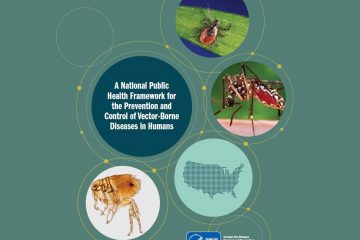- Home
- Find A Physician
- FIND A PHYSICIAN
- LymeTimes
- Current Issue
- Archives
- FEATURED LYMEDISEASE.ORG ISSUES
- Resources
- LYME LITERATE PHYSICIAN VIDEOS
- Physicians
- Members
- About Us
- Resources
S ummer is field season for ecologists like me, a time when my colleagues, students, and I go out into fields and woods in search of ticks to study the patterns and processes that allow disease-causing microbes—primarily bacteria and viruses—to spread among wildlife and humans.
 That field work means we’re also at risk of getting the very diseases we study. I always remind my crew members to pay close attention to their health. If they get a fever or any other signs of sickness, they should seek medical treatment immediately and tell their doctor that they may have been exposed to ticks.
That field work means we’re also at risk of getting the very diseases we study. I always remind my crew members to pay close attention to their health. If they get a fever or any other signs of sickness, they should seek medical treatment immediately and tell their doctor that they may have been exposed to ticks.
When summer flu-like illnesses develop in anyone who spends time outdoors in areas where ticks are common, tick-transmitted diseases like Lyme disease should be considered a likely culprit.
This summer, however, the global emergence of the novel coronavirus and COVID-19 is presenting a whole new set of challenges for diagnosing Lyme disease and other tick-borne illnesses.
Symptoms of Lyme disease — fever, head and body aches, and fatigue — can be easily confused with other illnesses, including COVID-19
Lyme disease shares a number of symptoms with COVID-19, including fever, achiness, and chills. Anyone who mistakes Lyme disease for COVID-19 could unknowingly delay necessary medical treatment, and that can lead to severe, potentially debilitating symptoms.
Delaying medical treatment can be dangerous
Summer is the peak period of tick activity in much of the Northern Hemisphere. Time spent outdoors increases in summer, as does the risk of contracting tick-transmitted disease
In some cases, there are key symptoms of a tick-transmitted disease that can help with diagnosis. For example, early Lyme disease, which is caused by the bite of an infected blacklegged tick, sometimes called the deer tick, is commonly associated with an expanding “bull’s-eye rash.” Seventy percent to 80% of patients have this symptom.
However, other symptoms of Lyme disease—fever, head and body aches, and fatigue—are less distinctive and can be easily confused with other illnesses, including COVID-19. This can make it more difficult to diagnose a patient who did not notice a rash or was unaware that they ever had a tick bite. As a result, Lyme disease cases can be misdiagnosed. Nationally, Lyme disease may be undercounted to the point that only one in 10 cases is reported to the CDC………Join or login below to continue reading.
You must be a LymeDisease.org member to access this content.





























